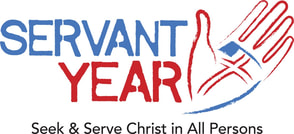|
Growing up in the United States can be harsh. Growing up in Philadelphia can be debilitatingly harsh. The United States and Somalia, that bastion of human rights, share the dubious distinction of being the only countries not to have ratified the UN Declaration of the Rights of the Child, a commitment to a child’s access to the necessities of healthy development—a name, food, physical, social, and spiritual safety, play spaces, housing, medical attention, “an atmosphere of affection,” and education (1). Among developed countries, the US is second only to Romania in prevalence of childhood poverty (2). In Philadelphia, supposedly over 40% of children experience or witness violence (e.g., gunshots, stabbings, rape) before their eighteenth birthday. The youth we work with, at Covenant House, an adolescent crisis center for homeless and marginalized youth, have experienced many forms of pain and become stuck.
Many costly and painful conditions and major causes of death vary along racial and socioeconomic lines—diabetes, heart disease, hypertension, obesity, cancer, mental illness, etc. A growing literature on Adverse Childhood Experiences has linked childhood exposure to stressors to most major health disparities in the US. These stressors include sexual abuse, physical abuse, emotional neglect, parental illness, among several others, and affect a whopping 60+% of the population (3). Stressful experiences disrupt the normal development of critical brain structures, including the hippocampus, amygdala, and prefrontal cortex. Mismodeled brains become less able to regulate emotions, control anxiety and aggression, think creatively, learn, and remember. These physiological and behavioral challenges often lead to unhealthy behaviors (e.g., unhealthy diets, substance abuse, risky sex), costly chronic diseases, and physical and psychic suffering. Among the gloomy data, one fact shines. The aforementioned negative outcomes of childhood stress are significantly buffered when the child has a stable, supportive, unconditionally loving relationship with an adult (4). Given the developing understanding of the profoundly negative impact of unhealthy developmental contexts on health outcomes, we will hopefully begin seeing increased funding and attention for childhood programs. The American Academy of Pediatrics has proposed preventing toxic childhood stress as a primary concern of pediatric care and policy in upcoming decades (5). Healthy childhood environments, especially during the critical developmental period of the first three years of life when the brain matures rapidly, are critical in ensuring the future economic and social stability of the country. However, what about the many, many adolescents who have already experienced a traumatic childhood and developed the physiology and behaviors that result from it? The youth whose 0-3 critical developmental periods did not nurture them sufficiently? The youth who have been removed from abusive families, locked up, sold drugs or their body to survive, and tried to survive on the streets? The youth we work with at Covenant House, 24/7/365? Fortunately, adolescence provides another critical developmental period, when the brain is still developing and being “rewired”. Youth who have been injured, developed bad habits, lived in hostile and impoverished environments, and survived receive a second chance from biology. Where do they get this chance from society? Schools? Not with behavior and attention problems. Employers? Not with a criminal record and drug habits. Family? Maybe. The state, via foster care? Only until your eighteenth birthday. These are the youth who come to us. Our job is to get them on their feet, by helping them become legal with IDs, helping them navigate legal and medical systems, and helping them find and maintain employment and housing. However, do yourecall that powerful buffer that protects developing brains from the negative effects of the stress that is inescapable at that point in their lives? A strong, supportive relationship with an adult. That is the critical part of the ambiguous job description that comes with all social service jobs. That is what enables the brain, creativity, learning and memory, and hope to thrive. The power of positive relationships was underscored to me a few weeks ago during a conversation with our site’s pediatrician, after I asked how he saw the role of Covenant House in the greater medical/ social services infrastructure of the city. He drew a picture of a cliff. At the bottom of the cliff, were hospitals, ambulances, and life support to catch youth who had fallen all the way down the cliff. Between the top and bottom of the cliff, he drew a trampoline, to represent Covenant House, and said “our role, here, is to help youth bounce back.” Then he looked me in the eye and said “and the way we help them bounce back, is by falling in love with them.” The actual, daily challenges of this—of providing structure and boundaries, finding youth’s individual strengths and admirable qualities among red flags, and building a supportive relationship with someone who has had little experience to develop an internal model of that—those topics will have to wait for future posts. (1) UN General Assembly. (1959). Declaration of the Rights of the Child. Resolution 1386 (XIV). (2) UNICEF. (2012). Measuring Child Poverty. Report Card Series, 10. <http://www.unicef-irc.org/publications/pdf/rc10_eng.pdf> (3) Bornstein. (2013) Protecting Children from Toxic Stress. NY Times. <http://opinionator.blogs.nytimes.com/2013/10/30/protecting-children-from-toxic-stress/?hp&rref=opinion&_r=0> (4) Shonkoff, Boyce, and McEwen. (2009). Neuroscience, Molecular Biology, and the Childhood Roots of Health Disparities: Building a New Framework for Health Promotion and Disease Prevention. JAMA, 301, 2252-2259. (5) Shonkoff et al. (2012). The Lifelong Effects of Early Childhood Adversity and Toxic Stress. Pediatrics, 129, e232-246. Tim's ministry placement is as a Youth Advisor at Covenant House.
0 Comments
Leave a Reply. |
Class of
|

 RSS Feed
RSS Feed
